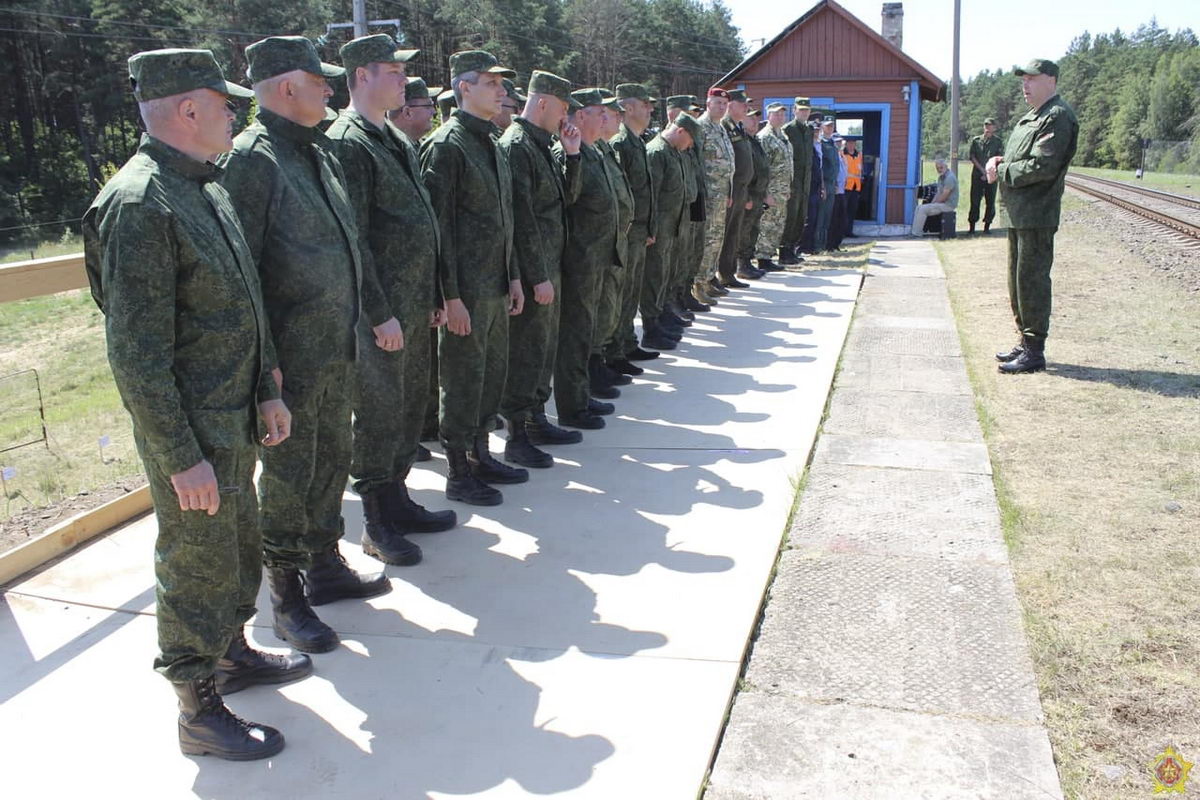Lukashenka is digging in but preparing to go on the offensive
 The situation got worse
The situation got worse

The Belarusian Armed Forces are intensifying combat training. After completing a complex exercise, a test of combat readiness has begun. The next six months will see a series of combat and operational readiness activities, the rearmament of Belarusian troops, and equipment placement along Belarus’ borders with Western countries and Ukraine. These actions are coordinated with the spring political calendar in Russia and Belarus (Russian presidential elections, the All-Belarusian People’s Assembly), as well as the Kremlin’s preparations for a new large-scale offensive against Ukraine.
Following the completion of the complex exercise on October 3, at the direction of Lukashenka, the next phase of testing combat readiness started in the Belarusian armed forces. The State Secretariat of the Security Council is overseeing these events. This comprehensive inspection will determine the readiness of military units and subunits to fulfill their designated tasks. Troops will move to designated areas, followed by the implementation of combat training standards.
Additionally, military and special equipment will undergo control runs, including over rough terrain. During the inspection, military equipment and personnel will be deployed on public roads in the Minsk and Vitebsk regions. The inspection includes units of the Special Operations Forces, the North-Western Operational Command, as well as the Air Force and Air Defense Forces. Aviation support is planned to assist ground forces.
Simultaneously, mobilization readiness classes have started and will continue until October 6. These classes are conducted under the guidance of regional committee chairmen. The purpose of these events is to enhance the training and coordination of territorial defense command and control bodies for the formation of territorial troops. Across the country, theoretical and practical events will be held with representatives from executive committees, military commissariats, and administration points for receiving mobilization resources. Special emphasis will be placed on training individuals liable for military service, who will be informed about the basics and procedures for forming territorial troops during a one-day training session.
On October 6, Lukashenka visited a military facility in the Brest region, one of the Ministry of Defense’s training sites. He was presented with a version of the engineering equipment used in the resistance center of the fortified area and the occupation of one of the army units on that site. Specifically, it was a stronghold of the “Khrenin Line” near the village of Saki in the Zhabinka district of the Brest region. Officially, this stronghold near the village of Saki was referred to as the “node of resistance of the Kobrin fortified region.”
During his inspection, Lukashenka stated that “there will be several similar lines of defense, but even larger, along the perimeter of the Belarusian border. They are organized with modern wars in mind, including those in Ukraine, and based on the recommendations of the Wagner PMC. Conceptually, the ‘Khrenin Line’ will consist of interconnected strong points and fortified areas in the western and southern regions of the country, bordering NATO countries and Ukraine, similar to the ‘Surovikin Line’ in Donbass and southern Ukraine.”
Lukashenka mentioned that he intends to engage in active defense but is ready to go on the offensive at any moment. To achieve this, the Belarusian army will be fully equipped with the necessary arsenal by the middle of next year, including communications, reconnaissance, drones, and striking capabilities. This will encompass active defense with interconnected strong points and fortified areas, which, upon a signal, will be occupied by troops in response to threats from neighboring states.
He also reiterated the possession of “powerful weapons” that could inflict “unacceptable damage” on the enemy, hinting at the presence of Russian tactical nuclear weapons. This statement coincided with the ongoing discussion in the Russian Federation about the withdrawal of ratification of the Comprehensive Nuclear Test Ban Treaty. Thus, the regime synchronized its rhetoric with the Kremlin as part of its nuclear blackmail of the West.
The deadline of six months for preparing the “Khrenin Line” and rearming the Belarusian army mentioned by Lukashenka falls in March-April 2024. By this time, important political campaigns in Russia and Belarus will be completed, including the Russian presidential election and the Congress of the All-Belarusian People’s Assembly. The Kremlin also hopes to lay the groundwork for new Russian offensives planned for spring 2024.
The nature of these preparatory activities indicates that a new, this time joint, attack on Ukraine is being planned from the territory of Belarus. The regime believes that the Khrenin Line and Russian tactical nuclear weapons will deter retaliation from Ukraine and its Western allies.
Subscribe to our newsletter




Situation in Belarus
Constitutional referendum: main consequences


 Video
Video
How to count the political prisoners: are the new criteria needed?


 Video
Video
Paternalism In Decline, Belarusian Euroscepticism, And The Influence Of Russia


 Video
Video












